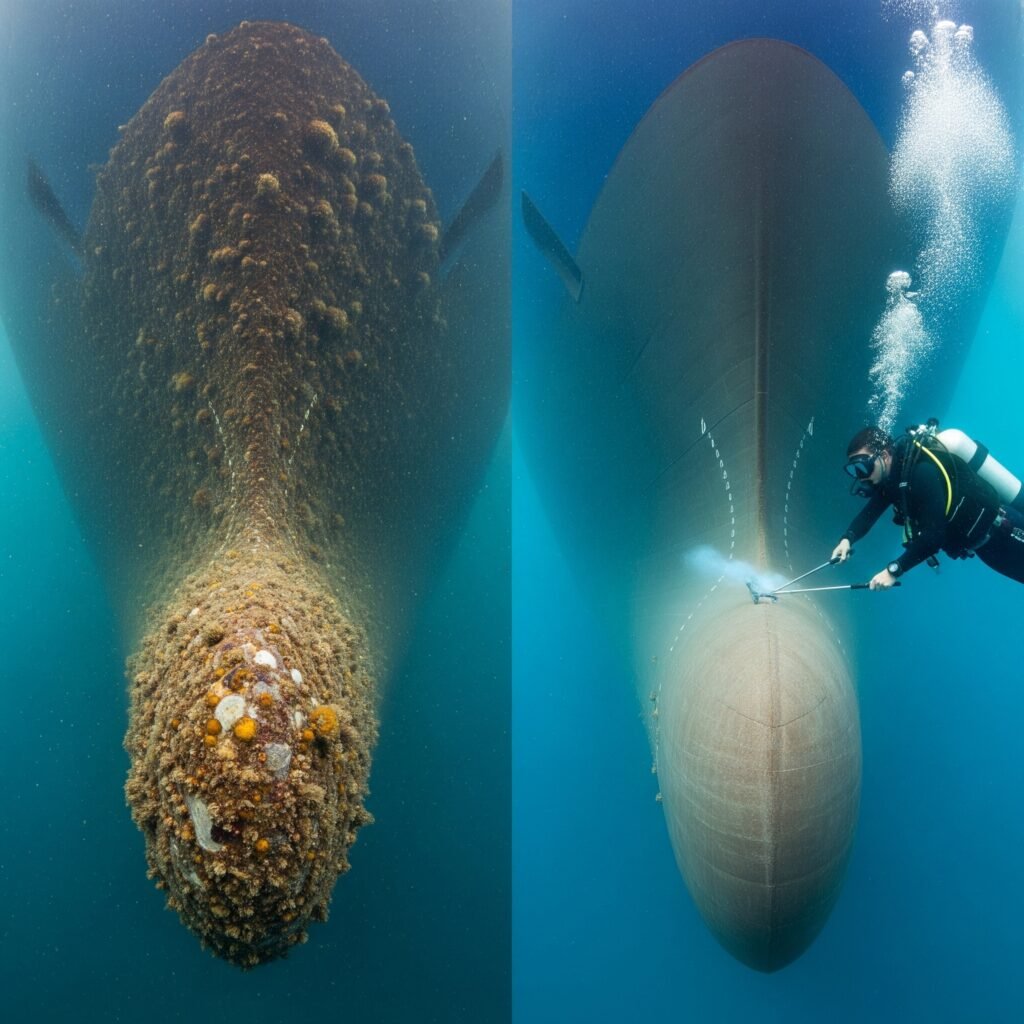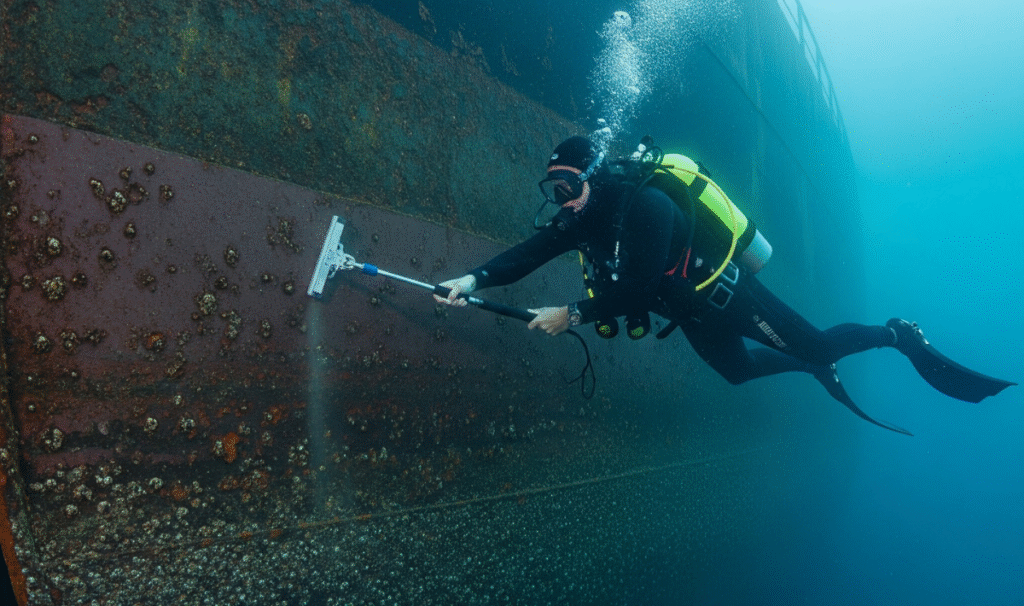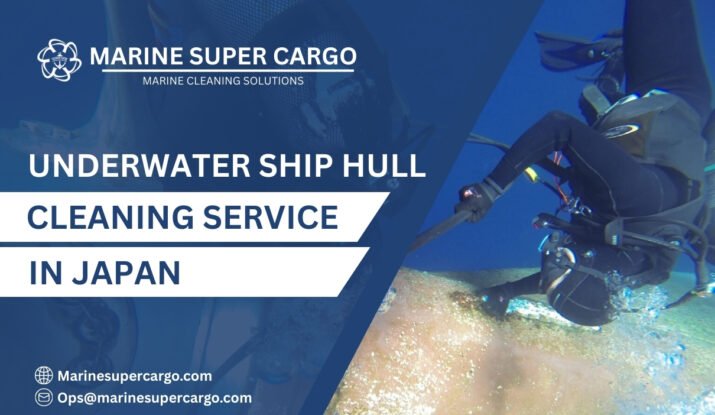Close your eyes and picture the sprawling Japanese coastline—from the bustling container terminals of Yokohama to the serene waters off Okinawa. On the surface, a well-oiled shipping industry hums along. But beneath the waves, an invisible struggle threatens efficiency, safety, and environmental harmony. Underwater ship hull cleaning in Japan is an absolute necessity—but it holds risks that every maritime professional must understand before diving in.
Japanese waters see a staggering volume of maritime trade, with ships passing through major ports like Kobe, Nagoya, and Tokyo Bay. Yet the constant threat of marine biofouling—algae, barnacles, slime—sticks stubbornly to hulls, sapping power and fuel. Hull cleaning mitigates this threat, but without the right method and controls, it can introduce new risks and complexities.
Why Underwater Ship Hull Cleaning in Japan Is So Important
Biofouling and Its Impact on Japanese Maritime Traffic
Keep in mind: marine growth can cut a vessel’s speed by up to 30%, increasing fuel consumption drastically. Japan’s network of busy ports and narrow straits means every knot and liter of fuel saved counts. Underwater ship hull cleaning in Japan helps vessels maintain schedules and meet environmental regulation demands while optimizing operating costs.
The Economic and Environmental Stakes
Economic imperatives drive intensive shipping—yet a damaged ecosystem or regulatory breach can mean severe penalties. The balance between maintaining operational efficiency and protecting Japan’s fragile marine environments centers on safe, effective underwater hull cleaning practices. Beyond compliance, these practices safeguard trade reliability, reduce costly fuel burn, and extend vessel life. They also play a vital role in protecting fisheries, coastal tourism, and local livelihoods dependent on clean waters. By adopting advanced, eco-conscious hull cleaning solutions, shipowners not only avoid fines but also actively contribute to Japan’s long-term economic resilience and marine conservation.

Environmental Impact and Pollution
Release of Toxic Paint Fragments and Chemicals
Underwater hull cleaning dislodges biofouling but also scratches away anti-fouling coatings loaded with biocides or copper compounds. If these flakes and the associated toxic chemicals are not contained, they pollute the water, threatening delicate marine life. MARPOL guidelines exist precisely to avoid this, but gaps in enforcement or technology can cause pollution risk during underwater ship hull cleaning in Japan.
Threat to Marine Ecosystems and Species in Japan
Japan’s coastal waters nurture diverse and sensitive lifeforms—from cold-tolerant kelp forests to coral reefs around Okinawa. Toxic substances and invasive species introduced during hull cleaning can disrupt these ecosystems, reduce biodiversity, and harm fisheries vital to local communities.
Hull Damage and Operational Hazards
Damage to Anti-Fouling Coatings and Hull Integrity
Overenthusiastic physical cleaning risks stripping precious hull coatings, exposing metal to corrosive seawater. This accelerates rust, leads to expensive repairs, and diminishes coating lifespan. Poorly trained operators or inadequate equipment increase such risks dramatically.
Diver Safety Concerns in Japan’s Waters
Diving in Japan is challenging due to cold currents, visibility changes, and heavy port traffic. Diving accidents, entanglement, and equipment failure can happen if protocols aren’t rigorously followed. IMCA-certified training is essential for diver safety during underwater ship hull cleaning in Japan.
Legal and Regulatory Risks
Japan’s Regulatory Framework in Line with IMO and MARPOL
Japan embraces international environmental regulation through the IMO (International Maritime Organization) frameworks and MARPOL conventions. Strict rules regulate waste management, emissions, and invasive species control in underwater hull cleaning operations. Non-compliance can lead to grave consequences.
Fines, Vessel Detentions, and Operational Shutdowns
Port state authorities in key locations like Yokohama and Kobe enforce these laws with inspections and compliance checks. Violations during underwater ship hull cleaning in Japan can trigger hefty fines, vessel detentions, or operational bans.
Best Practices to Mitigate the 3 Critical Risks in Japan
Responsible maritime operators in Japan:
- Employ IMCA-certified divers and contractors.
- Use closed-loop debris recovery and eco-safe cleaning methods.
- Schedule routine inspections to avoid heavy fouling buildup.
- Maintain detailed records of hull cleaning activities.
- Stay updated with Japanese maritime laws and international standards.
These ensure underwater ship hull cleaning in Japan is effective and low-risk.
International Standards
Critical to safe hull cleaning are the standards set by IMCA, governing dive safety; the IMO, regulating pollution; and the MARPOL Convention (Marine Insight – MARPOL Convention), setting pollution control rules. Japan enforces alignment with these bodies rigorously, ensuring its maritime sector stays global-compliant.

Why Japan’s Unique Marine Environment Intensifies These Risks
Japan’s long coastlines, varying water temperatures, and environmental sensitivity make hull cleaning caution paramount. Heavy vessel traffic in narrow straits like the Kanmon or Tokyo Bay requires safe, swift, and effective cleaning procedures. The risks of pollution, damage, and non-compliance amplify here—making cautious, professional hull cleaning essential. Additionally, the nation’s strong maritime regulations and its reliance on clean waters for fisheries and tourism heighten the importance of responsible practices. Partnering with expert providers ensures compliance, preserves delicate ecosystems, and keeps fleets efficient in one of the world’s busiest maritime regions.
Conclusion
Underwater ship hull cleaning in Japan is more than an act of maintenance—it’s a commitment to environmental stewardship, operational excellence, and maritime safety. By understanding the underwater ship hull cleaning in Japan and embracing meticulous standards, you ensure your fleet remains competitive, compliant, and respectful of Japan’s magnificent marine heritage. Partnering with CleanShip.co gives shipowners access to certified expertise, eco-friendly practices, and proven solutions that align with both international and Japanese regulations—helping vessels sail smoothly while safeguarding the seas for generations to come.
FAQ:
Q1. How often should underwater ship hull cleaning in Japan be conducted?
Biannual inspections and cleaning are typical; however, routes and fouling severity may require more frequent attention.
Q2. Are robotics and closed-circuit cleanings common in Japan?
Yes, modern ports in Japan increasingly adopt these technologies to enhance cleaning safety and environmental control.
Q3. What certifications guarantee professional hull cleaning?
IMCA, IMO, and MARPOL certifications are key indicators of reputable, safe service providers for hull cleaning in Japan.
Q4. What penalties does Japan impose for non-compliance with hull cleaning?
Penalties include fines, vessel detention, or operational bans enforced by maritime authorities in ports like Yokohama.
Q5. How can operators in Japan minimize ecological damage when cleaning hulls?
By requiring eco-friendly, debris-capturing cleaning and following international environmental regulations carefully.


